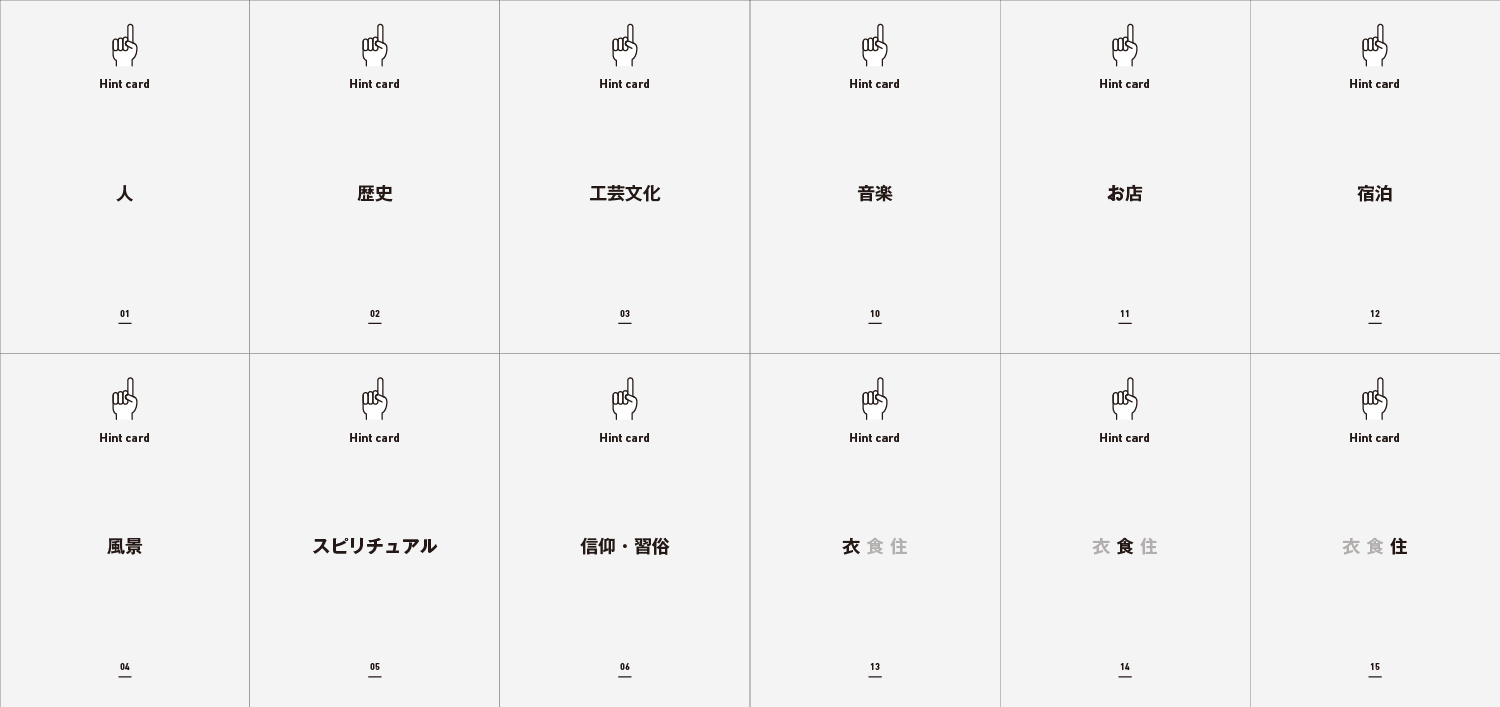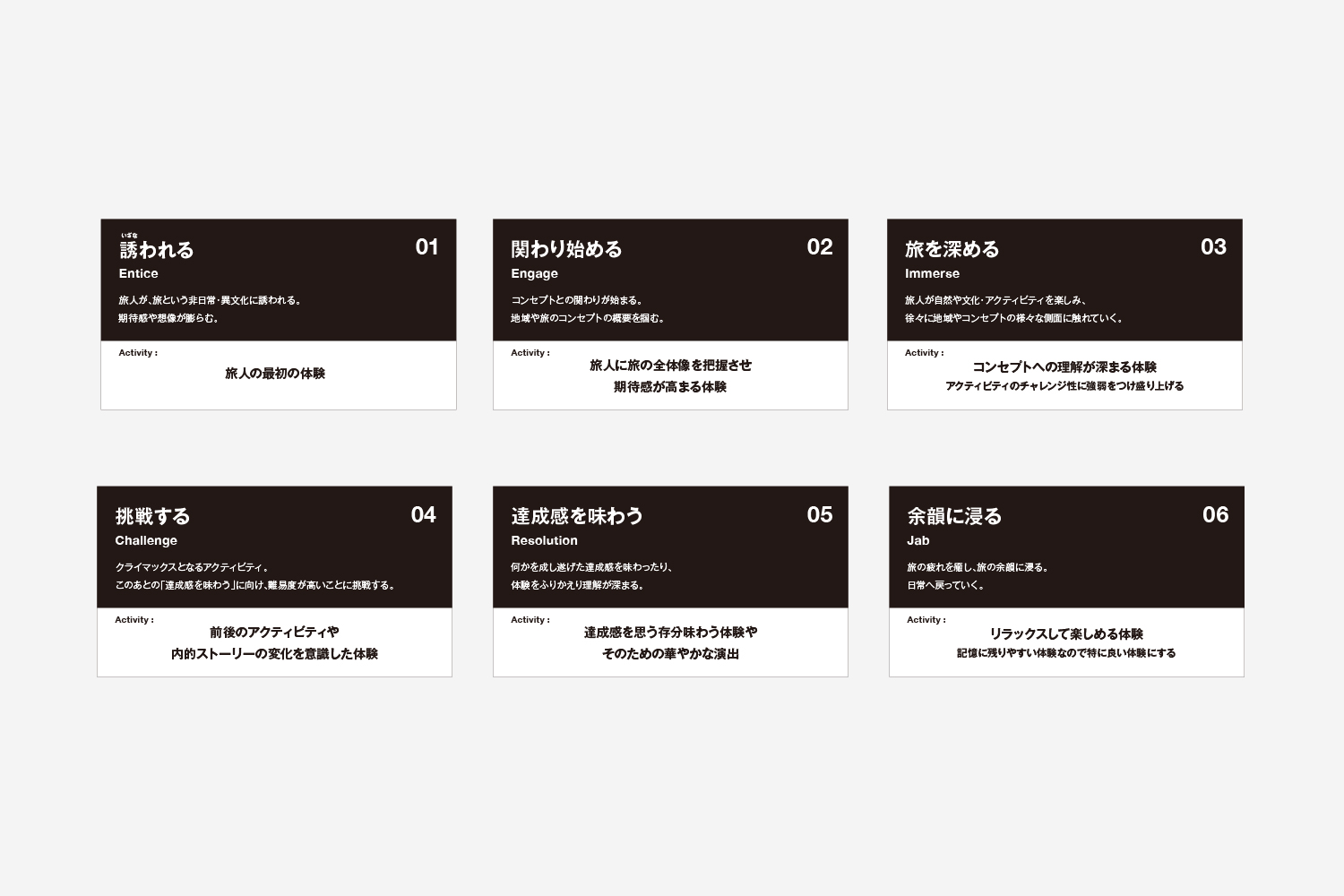Creating sustainable natural travel experiences
with a narrative strategy
As awareness of sustainability grows, the form of travel is changing as well. “Adventure Tourism,” which has begun to spread mainly in Europe and the United States, is a new style of travel that seeks sustainable experiences with rich concepts and stories in a place full of nature. In recent years, it has attracted attention in Japan. Even in the post-COVID era, where demand from overseas visitors is returning, there are high expectations for such tours that emphasize activities that allow travelers to experience nature and culture.
JTB Group is the pioneer in discovering the new possibilities of travel in adventure tourism and has been working to promote the provision of such tours within Japan. In this project, we conducted a design program for local guides and business operators to design and offer “sustainable adventure tourism experiences” to develop local talents who are the primary leaders.
ACTANT, in collaboration with partner company PUPLICA, developed a workshop program encompassing all aspects, from field research to tour design, as well as evaluation and branding for implementation. While building programs based on the characteristics of each region, we worked on providing design support that enables the provision of “stories,” which is the core of adventure tourism.
- Category
- CultureEnvironmentLifestyle
- Site/Year
- Okinawa, Kagoshima / 2021-
- Services
- Sustainable tourism / Narrative strategy / Experience journey map
Yoshinari Takahashi (Illustration)
Approach
Sustainable travel experiences
By making use of “stories”
Adventure tourism requires a sustainable and consistent story for the entire travel experience instead of a single tourist attraction. In addition, another important element is “self-transformation,” where travelers gain new knowledge and expand their horizons. To facilitate such transformation, it is necessary to structure various activities to create a “line” where travelers can actively achieve transformation through a series of experiences rather than an accumulation of “dots” where tourists are traditionally brought to various tourist spots to receive separate explanations.
Therefore, we have incorporated a narrative strategy into the tour design in this project. The “narrative” refers to how the story is, including the setting and development of characters, time, and place, as well as its delivery. By appropriately designing this “narrative,” travelers can become protagonists and weave their open yet consistent travel experiences into their transformations.


Method
Narrative strategy
From field research to implementation
We first conducted field research for the local travel agencies and guides to redefine the regional attractions through the lens of a “narrative.” By actually visiting the tour destinations, insights were extracted from the perspective of uniqueness, sustainability, and self-transformation. The insights were then organized, using tools such as hint cards to draw out the appeal from new perspectives.
In the subsequent co-creative workshop, we set the tour concept based on the target users and regional strengths. We created a consistent plan for the concept while considering the meaning and development of each activity according to the story. After the design, an on-site review was conducted with the guides according to the actual itinerary. Issues and areas for improvement were extracted through the review. The plan was then refined to proceed with the realistic implementation of the tour. This is a support program for the local guide operators to autonomously create tours with the charm of the land at its roots.


Result
Tourism leaders themselves as a designer
A sustainable system for creating tours rooted in the region
The implementation of this program has established a system for tourism operators to continue discovering the appeal of their regions and shape their tours. In addition to acquiring tour design techniques, we also supported the practical aspects of implementation, such as precautions and guidance that should be conveyed to travelers and the feasibility of the itinerary. Moreover, we supported the creation of a system that enables updates to be made in response to changing social conditions by developing KPIs and quantitative evaluation methods for guides to ensure the quality of the tours.

Point
- Narrative strategy utilizing elements of a story
- Co-creative design involving diverse stakeholders such as operators and tour guides
- Design tools to draw out site-specific appeals
- Consistent support from research to implementation and branding